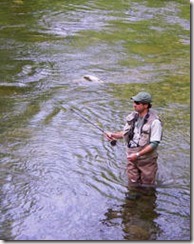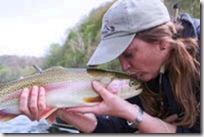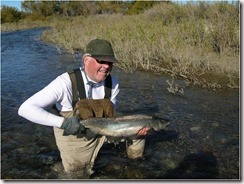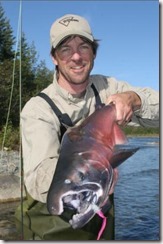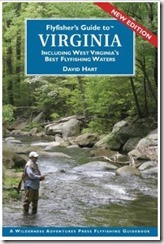2010 FFV Dinner Speakers
A few photos from the 2010 Annual Banquet…
(click on thumbnail for a larger image…)
Dr. David Jones was awarded the 2010 Taylor Turner Conservation Award…
Dr. Jones is a proponent and sponsor of the ‘Trout in the Classroom‘ initiative.
VDGIF’s Gary Martel was awarded the Nat Burgwyn Lifetime Achievement Award.
Flip Pallot was our January 23rd, 2010 Annual Banquet speaker.
Flip was born and raised in the middle of a triangle smack between Biscayne Bay, The Florida Everglades and the Florida Keys. His folks were born there as well and were early pioneers of Dade County.
It was a wonderful place for a young man to grow up (to whatever extent Flip has grown up). It was the perfect crucible in which to form a total outdoorsman…and form that man it did! Flip’s life indeed took shape in the swirling tides of those mysterious estuaries as he studied the patterns of migratory waterfowl, deer, hogs, turkeys and all manner of fish (this all accomplished while he might have been studying his lessons in school).
In the middle 1950’s his constant companions were John Emery (who he’d been in first grade with), Norman Duncan (the Duncan Loop), and Chico Fernandez (Everyone knows Chico). These four inseperables could be found along the shores of the Bay and down through the Keys or stalking the banks of the Tamiami Trail Canal most days after work. All four finished school during the evenings at the University of Miami (a whole other story!!!!).
From 1963-1967 Flip was in the jungles of Panama as a linguist with the U.S. Army. Fishing there and throughout Central America was wonderful, offering a preview of a fishing life in exotic destinations to come.
After returning from service, Flips’ career as a banker began…and lasted “Way to long” according to him. I once heard him say “Every day I’d put on a coat and tie, go to the bank and lend folks money to go do their dream, and at the end of the day I was still there, in my coat and tie, with my dream unfulfilled.”
He finally got up the courage to leave the bank…which led to his second career as a fishing and hunting guide; a career that lasted 12 wonderful years and morphed into his third career…Television!
Perhaps “Morphed” is not the right word. His career as a guide was actually ended by Hurricane Andrew. Flip and his wife Diane (he calls her D.B.) lived in Homestead, Florida when Andrew whirled in one evening destroying their home and scattering their property. Pretty much everything was lost. Friends like John “Dozer” Donnell, “Lefty” Kreh, Ted Jurascik, Joe Lunsford, Randy Miller, Glenn Lau, Mike Ehlers and Ron Hinman showed up immediately and pulled Flip and Diane’s spirits out of the wreckage. But with his skiff, airboat, truck and tackle all gone, Flip was out of the guide business.
Diane and Flip left South Florida and relocated at Mims…in Central Florida…between the St. Johns River and the Mosquito Lagoon. Yet more fertile ground for the total outdoorsman! The production of outdoor television became his third career.
Episodes of the ABC American Sportsman and the Outdoor Life series are where it all began (with the help of Stu Apte and Glenn Lau). His first series, on his own, was the Saltwater Angler, which aired for two years on TBS. Following that the Walkers Cay Chronicles was born and aired original programming for 16 seasons on ESPN. Along the way a couple of seasons with Mr. Glenn Lau filming Quest for Adventure which aired on OLN. Finally, last year, Fishing the Keys on the VERSUS network.
Flip has written a book called Mangroves, Memories and Magic and has just completed a two DVD set entitled All the Best: A Conversation with Flip and Lefty Kreh. This winter his newest book, a biography of Lefty Kreh will hit the stands.
Flip splits his time between Mims and Yankeetown, Florida with summers in Idaho chasing trout with his best fishing buddy D.B.
Here are a few photos from the 2010 Annual Banquet…
(click on thumbnail for larger image…)
Dr. David Jones was awarded the 2010 Taylor Turner Conservation Award…
Our March 11th, 2010 dinner speakers were Ian and Charity Rutter.
Their topic was ‘Big Trout on Streamers’.
Ian and Charity own R and R Fly Fishing out of Townsend, Tennessee.
Ian…has been fly fishing non-stop since the early 1990’s. He scheduled his classes around fishing while at the University of Tennessee at Knoxville. Ian graduated with a Bachelor of Science in 1994 and began guiding fly fishers in 1995. He is among the most sought after fly fishing guides in the Southeast and is on the pro staffs of both Scott Fly Rods and Hyde Drift Boats. Ian is equally comfortable guiding on the streams of the Smoky Mountains and the large tailwaters of East Tennessee and Western North Carolina. He wrote Great Smoky Mountains National Park Angler’s Companion, Tennessee Trout Waters: Blue Ribbon Guide, and Rise Rings and Rhododendron: Fly Fishing the Mountain Streams and Tailwaters of Southern Appalachia.
Charity…is a native Oklahoman and moved to Townsend in 1998. She met Ian and took up fly fishing a short time after. Charity was captivated by the sport and essentially fished non-stop in her first few years. She has been guiding since 2002 and maintains a busy guide calendar March through November. Charity is a pro staff member for Scott Fly Rods and Hyde Drift Boats. In addition to fishing all over the Southeast and parts of the West, she is addicted to saltwater flats fishing, especially tarpon.
Charity holds a Bachelor of Arts degree in Graphic Design and operates her own design business, Charity Designs. The few times she’s not on the water, she designs logos, brochures and other print materials. Her skills are evident in the graphic design of Great Smoky Mountains National Park Angler’s Companion, Tennesse Trout Waters, and Rise Rings & Rhododendron.
Our May 20th dinner speaker was Chip Drozenski.
‘Another Perspective: Big Fish Fishing’ ‘
WEBSITE: http://www.andesdrifters.com
PHOTOS: http://community.webshots.com/user/chipdro
FLY DESIGNS: http://danica.com/flytier/cdrozenski/cdrozenski.htm
My passion is fly fishing and fly design
interrupted by thirty years of life in Corporate America.
I have been fortunate to fish many of the great trout
and salmon rivers worldwide. My home river is the
Delaware which I have been fishing since 1968.
Give me selective fish particularly midge and trico
feeders and I am a happy camper.
In 2003 I retired, discovered Argentina and spend
every chance I have fishing all the waters that
Patagonia has to offer. Big rivers, small rivers,
spring creeks and stillwaters. The choices are many
and the crowds are few.
In addition to all the exciting fishing options this
destination has to offer I have found some unique
fisheries like bonefish flats with big cruising bows
and the ” RIVER of MONSTERS ‘ where fish over
five kilos are plentiful and a ten kilo fish is a possibility.
As part of ANDES DRIFTERS I am truly living the dream!!
A friend of mine has dubbed me the ‘ old gray trout bum ‘
and I relish the name and the perks that my new life in
the reel world has to offer.
Virginia author David Hart was our July 15th dinner speaker.
David Hart is a full-time freelance writer and the author of Fly Fisher’s Guide To Virginia, Including West Virginia’s Best Waters. He is a regular contributor to various hunting and fishing magazines. David lives near Farmville with his wife, Navona, two teenage boys, two dogs, a cat and 19 chickens.

Our September 16, 2010 dinner speaker was Dave Hughes
About Dave Hughes
I got hooked on the world of fly fishing and trout when I was a teenager growing up in Astoria, Oregon, which is where the Columbia River empties into the Pacific Ocean. That area abounded in salmon and steelhead and sea-run cutthroat trout to catch, deer and elk and ducks to hunt, clams to dig, a monstrous river and much larger ocean to explore.
I sampled all those things, but over time narrowed my few free days to bounding up headwater streams, in pursuit of resident cutthroat trout. Something about the environment in which those trout lived–the sun striking through cathedrals of trees, the beautiful streams that plunged swiftly, then abruptly put on their brakes to pool deeply, the predaceous trout that left their lairs to arise suddenly into sunlight and strike my dry flies–pleased me, and kept me coming back. Even in the face of failure.
My first fly rod was a cheap bamboo that snapped a foot from its tip, got handed past two older brothers and down to me. My first fly line was a level D, about the thickness and weight of kite string. Somehow I learned to cast with that line, on that rod, though they were as poor a match as you might imagine.
I practiced continually in the back yard. I caught far more trees and huckleberry bushes than I ever did trout when I got onto water. But the persistent mystery of the streams, winding down out of those hills, and the native cutts, emerging up out of those pools to toss spray in the air, gave me no choice but to be on those waters, after those trout. I still fish them whenever I can.
I commanded a small Army signal detachment on the Mekong River, another monster river, for six months during the dust-up over there. I ordered out an Orvis catalog, and spent hours of spare time studying its pages, closing my eyes, letting those pictures of bamboo rods, reels, lines, and flies escort me in dreams back to my streams. I ordered an entire outfit, glass, not bamboo, for seventy-five dollars, had it waiting for me when I got home. It was a 6-footer, for a 6-weight line. To say it was brisk would be an understatement, but it was the first balanced fly fishing outfit I ever owned. It was perfect for those small streams. I still have that rod, and still fish it on those same streams.
When I got back to the states, I went back to college, audited an aquatic entomology course taught by Professor Norm Anderson, whose lab assistant was a fellow named Rick Hafele. He had all this knowledge about bugs that trout ate, and by then I owned a bamboo fly rod, so I conned Rick into going fishing with me by offering to let him take a few casts with my rod. He bit. My favorite memory of that first day fishing was when a big golden stone adult descended out of the overhead canopy of alders, lowered its flaps and wheels, and flew lower and lower over the stream, probably on a mission to deposit the eggs of the next golden stone generation. Rick and I were eating lunch on a gravel bar. It was the age of Latex waders, and it was a hot day. Rick had his waders peeled down over his Levis, to cool off, while we ate. He saw that golden stone descending, grabbed his bug net with one hand, held up his waders with the other, and tore off down the middle of a long, shallow pool after it. I’ll never forget the sight of Rick running and jumping in a shower of spray, flailing at the insect with his long-handled net, holding his waders up, trying to keep from tripping, and yelling “Holy s___! Holy s___!” He caught the poor bug, embalmed it, probably still has it in his extensive collection. We’ve been fishing together ever since, and something still always happens that makes the fishing a lot of fun.
Rick and I began teaching a workshop with the unwieldy name Entomology and the Artificial Fly. He did the insects. I did their imitations. We went all over the West with it. We noticed that our early students would spend the entire two-day seminar with their heads down, furiously writing notes, and would rarely look up at the slides we worked so hard to get. We wrote a 30-page booklet, handed it out to each attendee, so they could relax and enjoy the workshop. The great Don Roberts, then editor of “Flyfishing the West,” got ahold of a copy of the booklet, told us to flesh it out and add photos and we’d have a book. We did, and it became Western Hatches.
That led to a life of going fishing, writing articles for all the fine fly fishing magazines that arose in the subsequent years, even for Outdoor Life, Sports Afield, and Field & Stream, the magazines I’d read when I was a kid. It also led to a long string of books–I’ve never figured out if I’m a fly fisherman who loves to write, or a writer who loves to fly fish, but I suspect behind it all I’m a reader who loves to write and loves to fly fish.
If that life seems simple–going fishing, coming home to write stories about what happened out there–think back to that first outfit of mine, the broken rod on which I tried to cast kite string. A life of writing is about like trying to cast that poorly-balanced outfit. I spend my average day now, in the studio I had built behind our house in Portland, fighting technology, which generally seems to win. I’m best to just set it all aside and go fishing.
Here is a sampling of Dave’s 20 books…








Our November 18th program focused on the
(Wanyesboro, VA area)
Harold Tate and Dr. Thomas Benzing discussed a section of this river near Lyndhurst that will be developed as a premier fly fishing venue. This section of the South River may some day soon surpass the famous ‘Mossy Creek’ fishery in opportunities for catching large trout!
Harold Tate is a retired Boy Scouts of America executive and past president of the Virginia Council of Trout Unlimited.
Dr. Benzing is an environmental science professor at James Madison University as well as vice president of conservation of the Virginia Council of Trout Unlimited.
Harold and Tom co-chair the South River Fishery Development subcommittee of the South River Steering Committee.

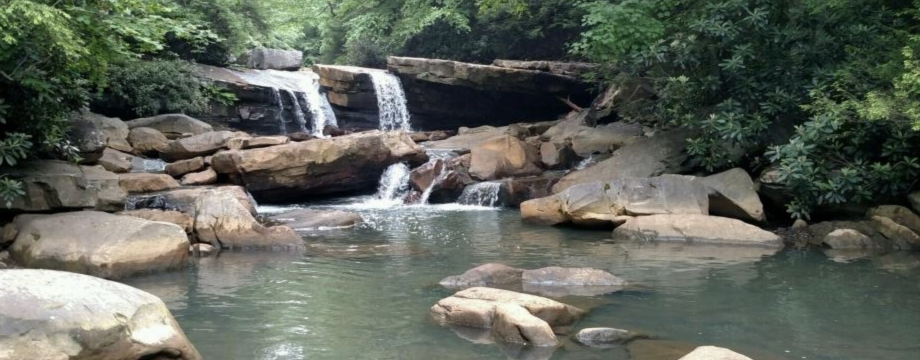






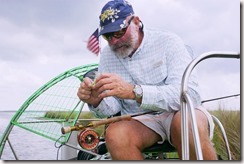
![t1010161[1] t1010161[1]](http://www.flyfishersofvirginia.org/wp-content/uploads/2012/11/t10101611_thumb.jpg)
![t1010150[1] t1010150[1]](http://www.flyfishersofvirginia.org/wp-content/uploads/2012/11/t10101501_thumb.jpg)
![t1010153[1] t1010153[1]](http://www.flyfishersofvirginia.org/wp-content/uploads/2012/11/t10101531_thumb.jpg)
![t1010182[1] t1010182[1]](http://www.flyfishersofvirginia.org/wp-content/uploads/2012/11/t10101821_thumb.jpg)
![t1010183[1] t1010183[1]](http://www.flyfishersofvirginia.org/wp-content/uploads/2012/11/t10101831_thumb.jpg)
![t1010206[1] t1010206[1]](http://www.flyfishersofvirginia.org/wp-content/uploads/2012/11/t10102061_thumb.jpg)
